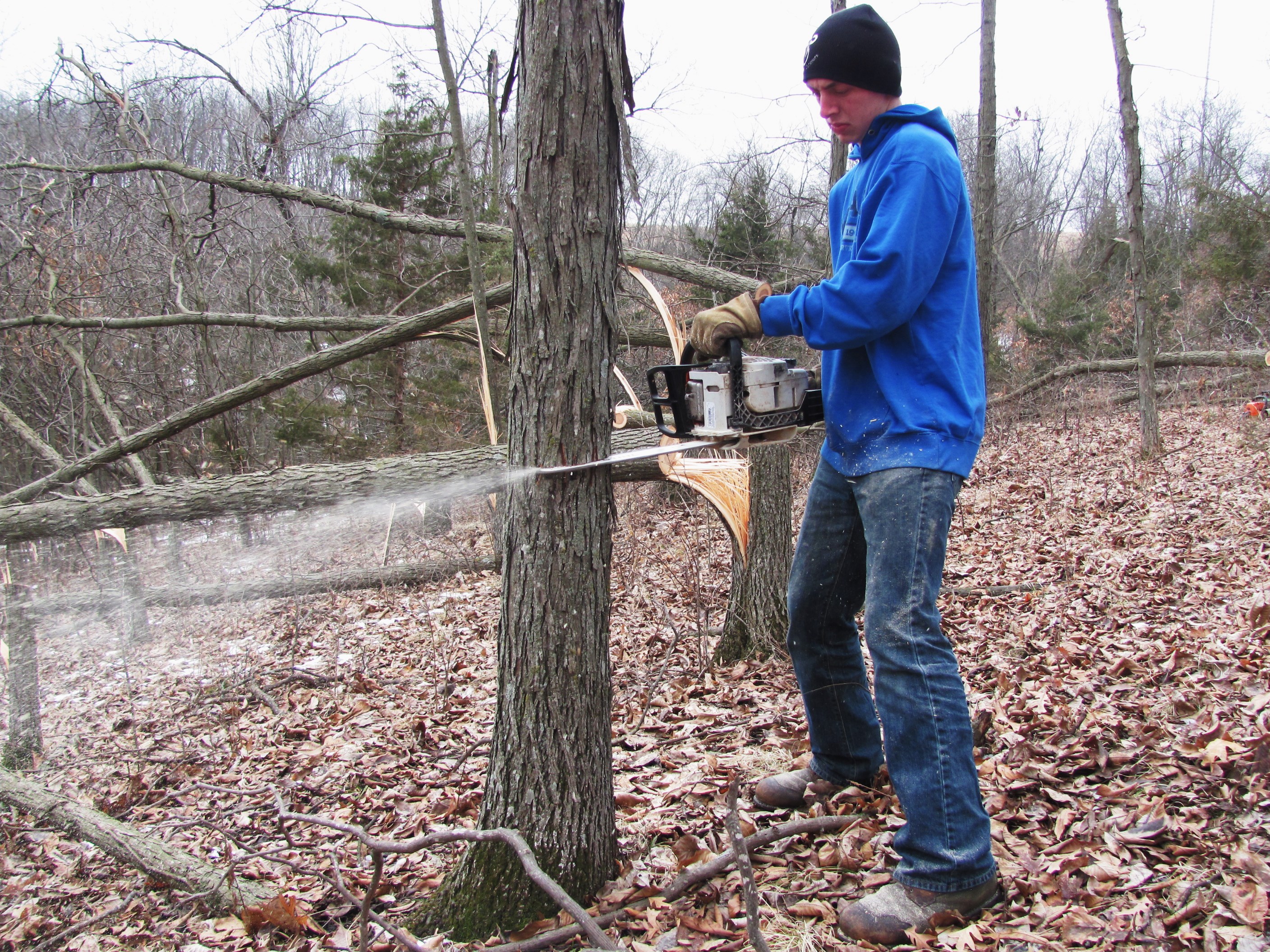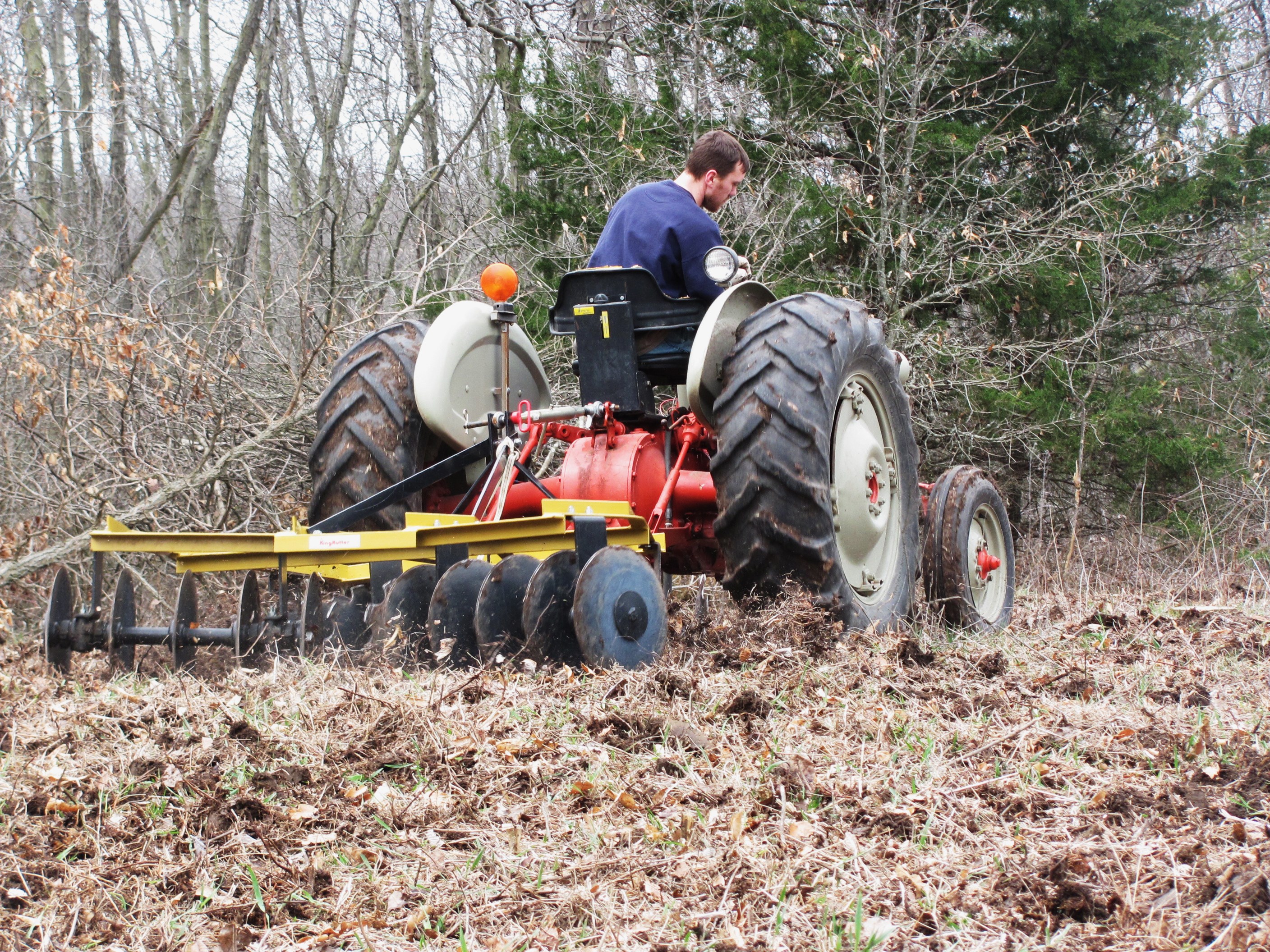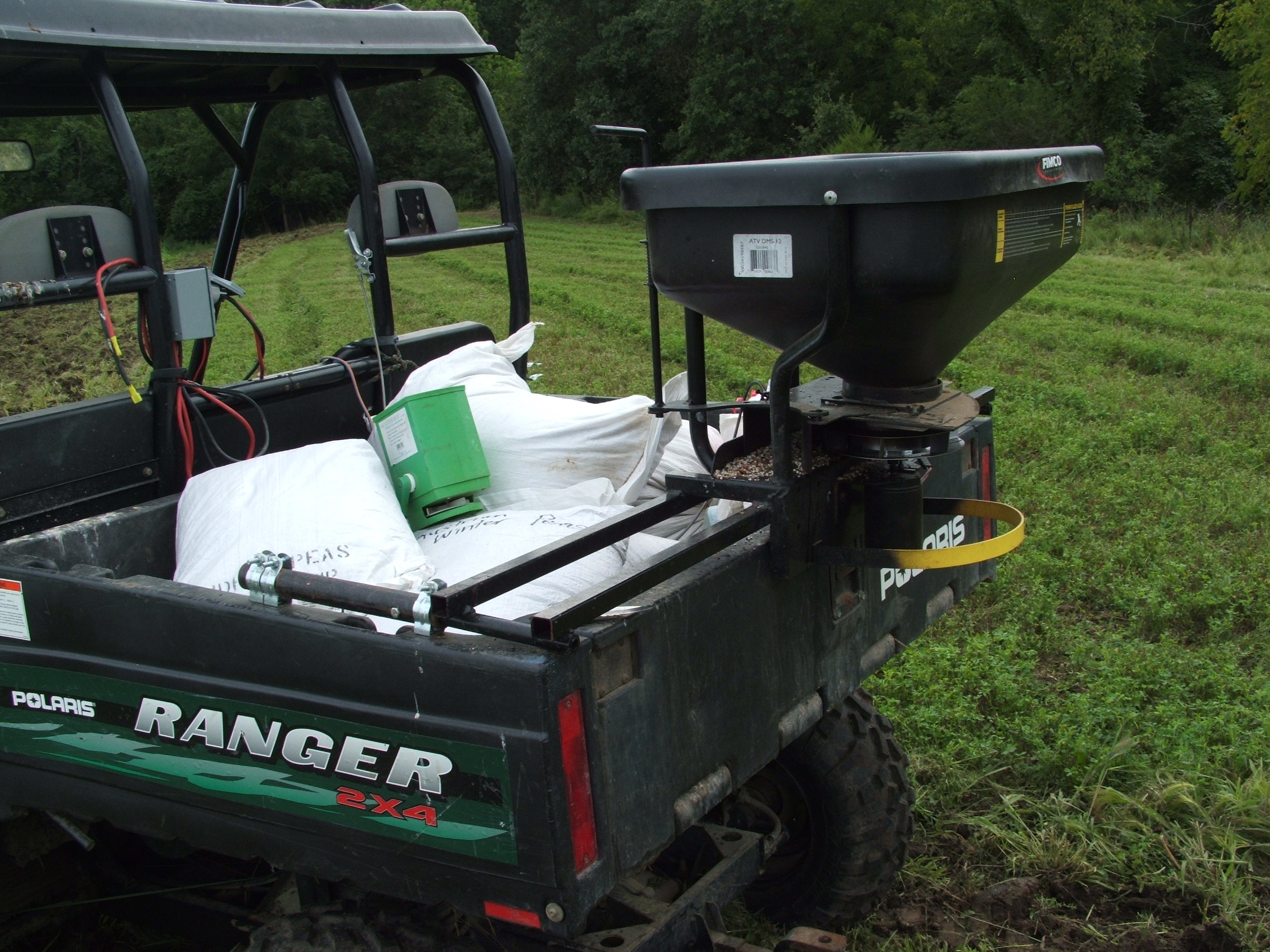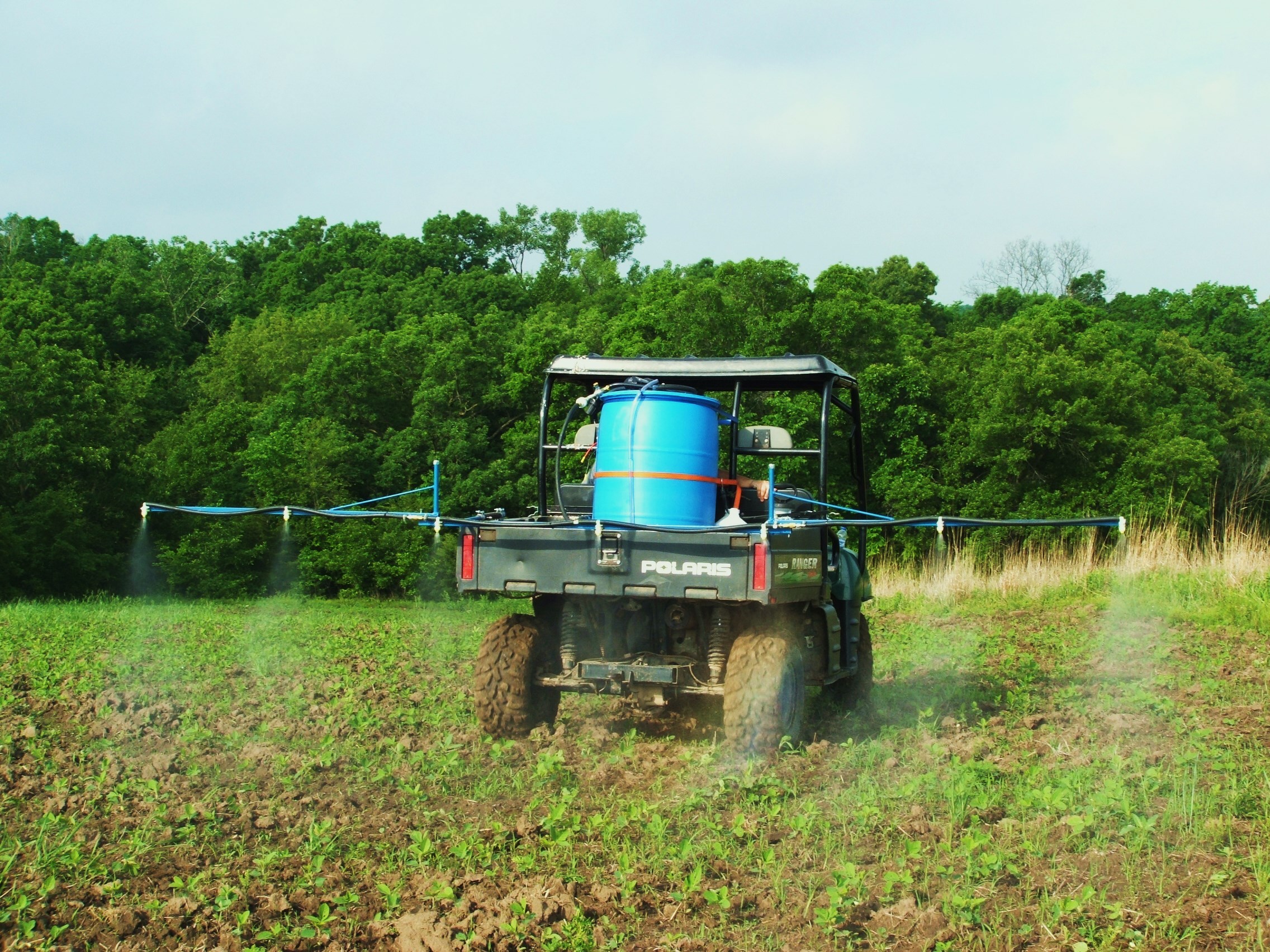Food Plot Equipment and Habitat Tools of the Trade
January 2015 Planning out this Year’s Budget for Tools of the Trade.
Before every hunting season I make a list of sorts on what I can afford to buy in terms of tools or equipment that I need for my endeavors of the year. I’m not a big equipment guy when it comes to weapons, gadgets, clothes, etc. When I spend money I look at the return I feel I am getting from that investment. I could spend this entire article on describing to you why I spend the bulk of my budget on ways to improve the habitat on my farm. But suffice it to say that in hunting whitetails for 30 years the one thing that I have learned is that access to good hunting land…or making current lands better through habitat and other land improvements has the biggest return on investment. So, when planning out any year’s hunting budget it should be obvious where those investments should be. In future articles of Whitetails 365 I will be going over in detail tactics to make your hunting grounds better. To accomplish these monthly tasks, you will need some tools of the trade. So let’s get started.
The highest return on your investment when making your hunting grounds better comes from habitat improvement. And taking into consideration all the ideas to make your habitat better, the best tool for the job is a chainsaw. If you don’t have access to a chain saw, you’re going to need one to make this work. A chain saw is required when creating man made security cover, interior food plots, and makes other chores a whole lot easier (cutting shooting lanes for example). You can pick up a used saw for $50. If you prefer a new saw you can get one for under $200 that will cover all the basic needs of habitat improvements. Stihl makes a good basic model the MS170 that you can pick up for under $200; negotiate with your dealer for an extra bar and chain. This lower end model won’t fit the needs of a logger, but works great for what we need it for. I have a larger saw but prefer my MS170 any day because of its light weight.

My son Forest using the Stihl MS170 to hinge cut some shagbark hickory.
I will be talking a lot about food plots. After direct habitat methods, food plots are probably the next best way to make your grounds better for hunting. There is a whole list of tools to make this possible. My first food plot almost 30 years ago was put in using a rototiller and hand planting. I guess I could argue it didn’t cost me much to do it, but I can’t imagine planting today with a rototiller and hand seeding. Especially if you are putting in some acreage or don’t have unlimited time. Today, the vast majority of my plots are planted with my Ford 861 tractor with 6 ½ foot disc and 12 volt seeder mounted to my Polaris Ranger. With only these 4 pieces of equipment, I can accomplish the planting of all my food plots and the Ranger and tractor help with other chores on the farm. I consider this set up to be adequate and very good for what I need. But, if your budget doesn’t allow, you can get by with less or invest in these types of higher cost pieces over time.
My Ford 861 (46hp, 1950’s vintage) cost me $3500, has live hydraulics for my 3 point disc and a live pto for using my brush mower. I also have a Minneapolis Moline Jet Star 3 Super (44hp, 1969) with live pto and hydraulics that I almost stole for $500. You can pick up older model International tractors and smaller Fords (8n, 9n, Jubilee) for $1500 quite regularly. And of course, you can buy a new utility tractor with all the bells and whistles for $20,000. Personally, I wouldn’t even bother with a tractor unless it had 3 point hook up. I recommend tractors but you can get by with larger ATV’s.

This is my Ford 861 and 6.5 foot King Kutter disc. A tractor and disc is the best all purpose set up for food plots. This combo cost me about $4300. Notice the back row of discs are not notched…they have since been switched over to all notched blades. Here my friend Tony is tilling up some ground on an interior plot.
A disc or disc harrow as they are sometimes called will break ground for you and do a great job of covering up seed in most cases. I prefer the 3 point mounted discs. I have a 6 ½ food King Kutter disc with notched blades all the way around. I like notched blades…they cut better in hard and thatchy ground. This model costs around $850 new but you can find older models and used models for under $500. If you are using your ATV for food plots, you can get some pretty good discs for right around $1000. Tufline makes a disc in its ATVD line that is pretty good and Tarter also makes a good ATV pull behind model. Of course there are other higher end models for pulling behind a 4 wheeler. For a few years, I used a cheaper flip over disc and ATV for all my plots…but this puts a pretty good beating on them. You can pick up cheaper pull behind discs made for ATV’s for $500 or less, but having used one for many years I wouldn’t go that route today. If you have to use an ATV and can budget the extra cash, go for the higher end pull behind.
For putting seed in the ground, the cheapest but least efficient method is throwing the seed by hand. Believe it or not, this method works pretty good especially on the larger seed like soybeans, corn, or winter rye. For smaller seed like clover, alfalfa, or brassicas you almost need some kind of spreader. You can pick up any number of handheld spreaders for under $35. Earthway makes a handheld seeder for $14. Today, I use one of my 12 volt seeders mounted on my 4 wheeler or Ranger. Earthway makes a decent 12 volt model you can mount to the rack of your ATV; it’s the model M20 and costs about $200. It would be a basic 12 volt spreader with manual controls and does a fine job with all seed sizes and most fertilizer. I have a Fimco ATV-DMS-12V that I use almost exclusively today. It comes with variable speed control for the motor and I modified my unit to have remote hand control for the seed opening. It cost me $300 before modifications but is a very good unit. 12 volt seeders are great; but if you are just getting into this hand seeding bigger seeds and using a cheaper handheld seeder for the small stuff will get you by.

This is my 12volt Fimco seeder. I altered it so that I can control the seed opening remotely from the front of the Ranger. The speed is also controlled remotely from a variable speed drive. This is a very good high end set up.
For establishing perennial food plots and to have good annual plots you need some way to control the weeds. Spraying herbicides is probably the best way to do this along with tillage. Tilling your ground will really only get you so far and is probably adequate for annual fall planted plots like winter rye or summer planted brassicas. But if you ever want to get into soybeans, corn, or year round plots, having a method for applying herbicides through spraying is truly your best option. You can buy a boomless 20 gallon sprayer that mounts to your 4 wheeler for around $200. A handheld or backpack sprayer will also work. Believe it or not, one year my sprayer pump died on me and I was forced to spray over 3 acres of soybeans with a 2 gallon hand held sprayer. It worked just fine…although it took me half a day to accomplish the task. Today, I use a sprayer that I custom built for my Polaris Ranger. It holds 50 gallons and has a 15 foot boom…covering 18 feet with each pass. I can spray a solid 5 acres before I need to refill. Northstar, CountyLine, and Fimco are all examples of brands that can fit your needs. Do a Google search for ATV Sprayers and shop around for what fits your needs the best.

This is my home made sprayer with a 15 foot boom. I can cover about 18 feet per pass and can cover over 5 acres before needing to refill. Cost under $300.
I want to touch a bit on what food plots cost. I get asked a lot how much it costs to put in certain crops or food plots so I ran some quick estimates on what it costs me. For all estimates, I am assuming you are doing all the work yourself and have all the equipment available. If you need to hire help or rent equipment it will cost more. Starting with corn, I used the Iowa Ag Decision maker to come up with a $300/acre estimate to plant and leave corn as a food plot. This includes seed, fertilizer, herbicide, and other costs like fuel. Soybeans will cost you about $125/acre. Winter rye will cost you about $40/acre planting at a rate of two bushels to the acre and using elevator seed (non-certified). Clover, alfalfas, and brassicas seeds and blends will run around $50/acre or higher if maintenance is required like mowing or yearly herbicide applications. All costs, for all types of food plots can get higher if you experience the inevitable equipment break down. And in my examples, I’ve used all agriculture bulk or wholesale seeds. If you buy and use name brand food plot seed the costs could double or even triple.
Although it has nothing to do with management, each year I budget for one new stand or blind. As a rule of thumb, I think to have a good year long hunt; it takes at least 6 stands per hunter on any given farm so as to not burn them out. The strap on stands seems to have a life span because the straps and seats just wear out. An adequate stand is going to cost you around $100. I usually try to find mine on sale and can pick up a nice stand for around $75. Better stands are going to cost you more. Having enough stands to hunt multiple wind directions and mornings and evenings can really help.
I have no way of knowing what each hunter needs outside of the things covered in this article so far. And, like I said before I’m not a big equipment guy. Outside of investments made to improve your hunting grounds there are very few things that will give you as good a return on your investments. At least if your return is measured in more consistent sightings of deer especially good bucks. So if you have a budget, or need to work some overtime, start thinking now about what it might cost you to turn your hunting grounds into deer and buck magnets for this fall.
| Equipment Type | Minimum/Cost | Better/Cost | Best/Cost |
| Saw | Hand Saws=$50 | Used Chainsaw=$50-$150 | New Stihl MS170=$200 |
| Power | Hand Tools=minimal | ATV=$1500(used)-$6000 | Tractor=$1500-$4000(used) |
| Disc Harrow | Hand Tools=minimal | ATV pull type=$500-$1500 | 3 Point Model=$500-$1500 |
| Seeders/Spreaders | Disperse by hand=free | Hand Spreaders=$14-$50 | 12 Volt Models=$150-$450 |
| Herbicide Sprayers | Hand Sprayer=$30 | 12 Volt boomless=$200 | 12 Volt Boomed=$200-$400 |
Hopefully I have stirred your interest in what it is going to take in terms of equipment to get down and dirty this year in making your hunting grounds the best they can be. This is a long process that never really ends. On a new farm, my experience tells me that it takes around 3 years to get a farm where I want it. And this is with having all the equipment already! Then, with yearly maintenance, I am able to keep my farm in top shape holding deer and drawing in some good bucks. This stuff is all meant to be fun too.
January-I will be finishing up with late muzzleloader season on my farm. Then if time allows, I will be doing some timber cutting and interior food plot maintenance (details in later articles). I’m also in the budget for a new tripod stand so I’ll start looking into that. January is a good planning month!
In February’s issue I will be talking about planning for and making interior food plots. Tools you’ll need: Chainsaw and a strong back!
In March’s issue I’ll cover creating security cover and how to create security cover in conjunction with interior plots for some great fall hunting. Tools you’ll need: Chainsaw and a strong back!
